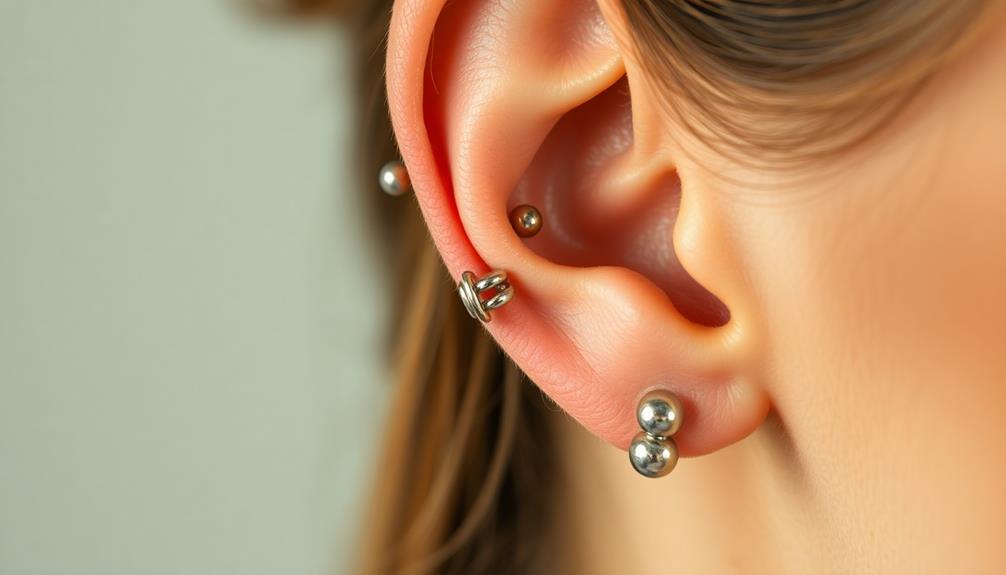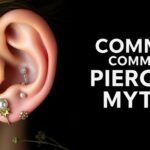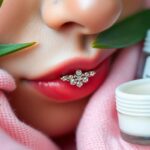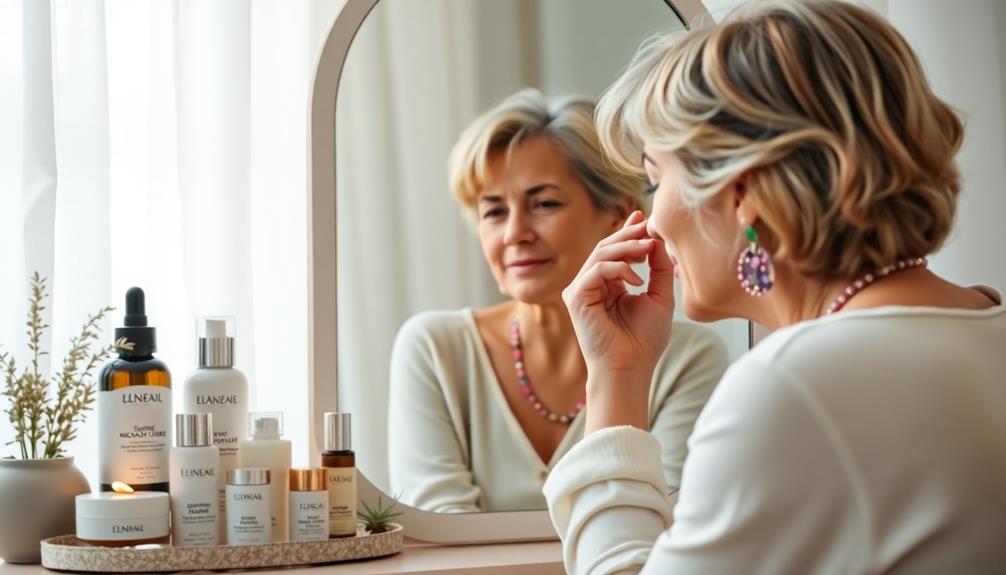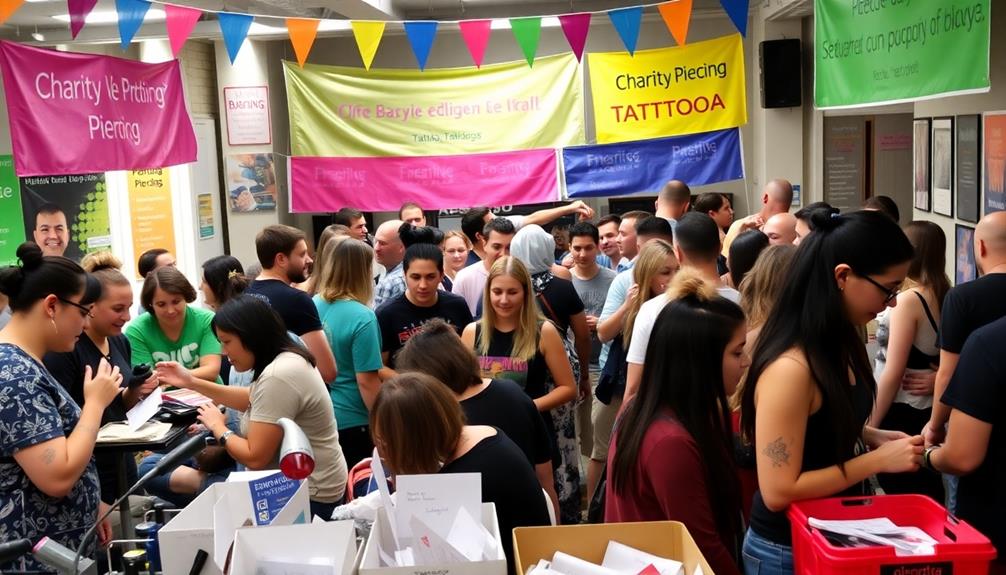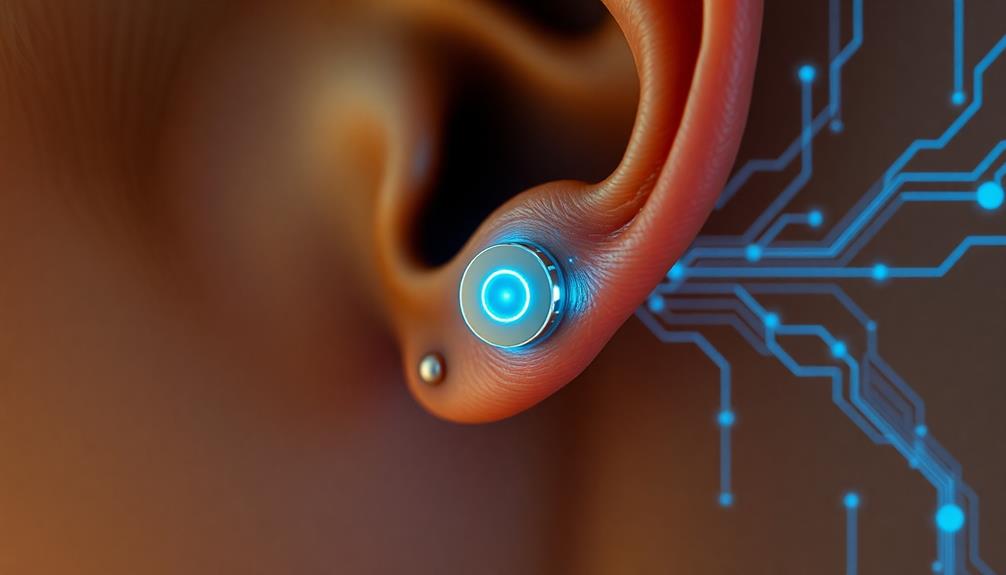Hormonal changes, whether from your menstrual cycle or conditions like PCOS, can seriously affect your piercings. You'll likely experience increased sensitivity, swelling, and longer healing times. During menstruation, your piercings might feel especially tender due to hormonal fluctuations, while elevated oil production can lead to irritation. If you're on hormone replacement therapy, you might notice added discomfort as your body adjusts. Proper aftercare, like gentle cleaning and avoiding harsh chemicals, becomes essential to manage these effects. You'll discover more tips and insights to guarantee your piercings stay healthy and comfortable through hormonal shifts.
Key Takeaways
- Hormonal fluctuations can increase irritation and swelling, particularly affecting nipple piercings and prolonging healing times.
- Menstrual cycles heighten sensitivity, tenderness, and excess secretions, complicating the healing process of piercings.
- Conditions like PCOS can lead to longer healing times and require tailored aftercare strategies, including larger gauge jewelry.
- Hormone Replacement Therapy (HRT) may cause breast tenderness and swelling, necessitating adjustments in jewelry for comfort.
- Proper aftercare, including gentle cleaning and monitoring sensitivity, is essential to prevent infections and manage discomfort during hormonal changes.
Hormonal Fluctuations and Healing
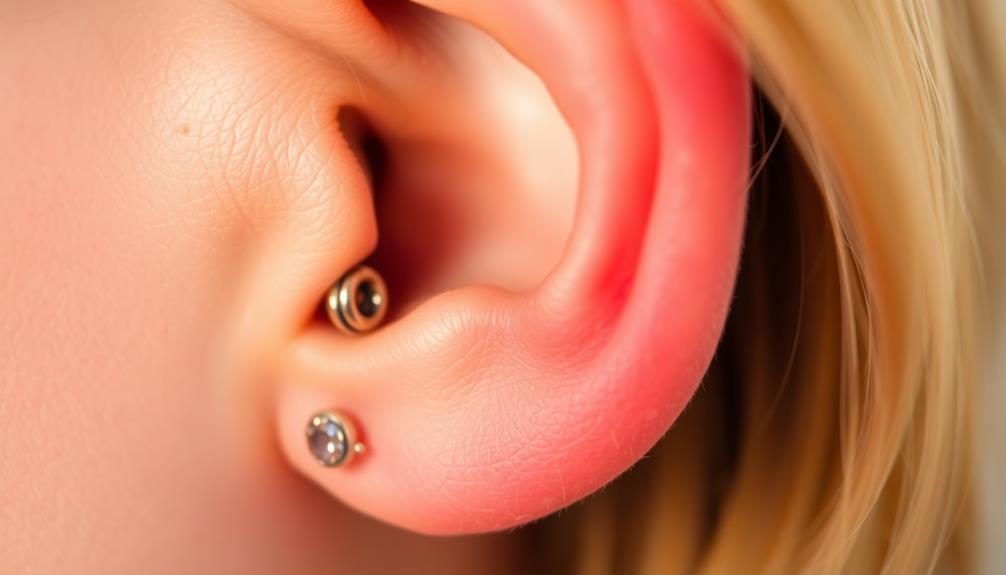
Hormonal fluctuations can greatly impact the healing process of your piercings. When you experience hormonal changes, especially during menstruation, you might notice increased irritation and swelling around your nipple piercings. These changes occur due to variations in blood flow and skin sensitivity, which can make the healing process more uncomfortable.
If you have conditions like PCOS, you may face even longer healing times and heightened inflammation in your newly pierced areas. Hormonal imbalances can lead to increased activity of sebaceous glands, causing more secretions that might irritate your healing piercings.
This irritation can be exacerbated by sleep disturbances from menstrual symptoms, which might cause you to adopt unfavorable sleeping positions that further aggravate the area.
Additionally, hormonal changes can affect your skin's overall health, leading to acne or increased sensitivity. This can indirectly impact your comfort and the healing process of your piercings.
Being aware of these factors can help you manage your healing more effectively and make adjustments as needed to guarantee your nipple piercings heal smoothly.
Impact of Menstruation on Piercings
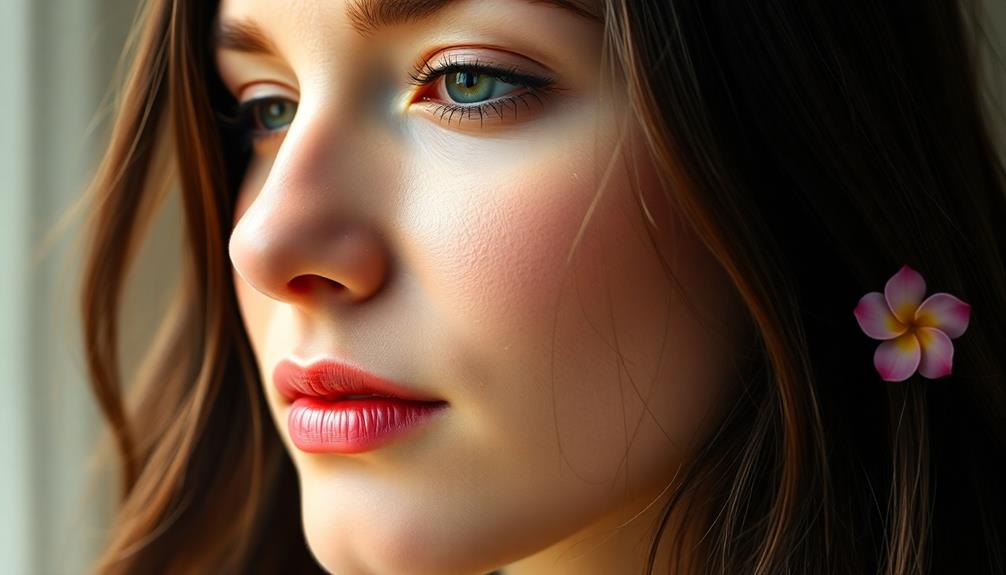
When you're on your period, you might notice that your piercings become more sensitive and painful.
Hormonal changes can lead to swelling, making the healing process more complicated.
It's important to pay extra attention to cleanliness and comfort during this time to avoid irritation and guarantee proper healing.
Healing Complications During Menstruation
How do hormonal changes during your menstrual cycle affect your piercings?
During menstruation, hormonal fluctuations can lead to increased swelling and tenderness in both fresh and healed body piercings. This can complicate the healing process, making it vital to be extra vigilant. You might notice heightened sensitivity around your piercings, which can make any discomfort feel amplified.
Additionally, the activity of your sebaceous glands increases during this time, resulting in excess secretions. This excess can irritate healing piercings, hindering their recovery. If you're tossing and turning at night due to menstrual cramps, you may inadvertently irritate your piercings further, affecting your overall comfort.
To minimize these complications, maintaining proper hygiene is essential. Frequent changes of menstrual products can help prevent infection and keep the area around your piercings clean.
Sensitivity and Pain Perception
During your menstrual cycle, sensitivity and pain perception can markedly change, especially around new piercings. Hormonal fluctuations heighten sensitivity, making areas like nipple and genital piercings more prone to discomfort.
You might notice increased irritation and even irritation bumps as your body adjusts to these hormonal shifts. Additionally, incorporating natural pain relief methods such as effective herbs for soothing nerve pain might help alleviate some of the discomfort associated with these changes.
Swelling can also occur in healing piercings, complicating the process and intensifying any discomfort you feel. Menstrual symptoms like cramps and fatigue can indirectly affect your sleep quality, causing you to toss and turn. This movement can exacerbate irritation in your healing piercings, making them feel even more sensitive.
To manage this discomfort, consider proper aftercare. Using anti-inflammatories can reduce swelling, while cool compresses may help soothe sensitive areas.
Keep an eye on your piercings and adjust your aftercare routine as needed to maintain comfort during this time.
PCOS and Piercing Considerations
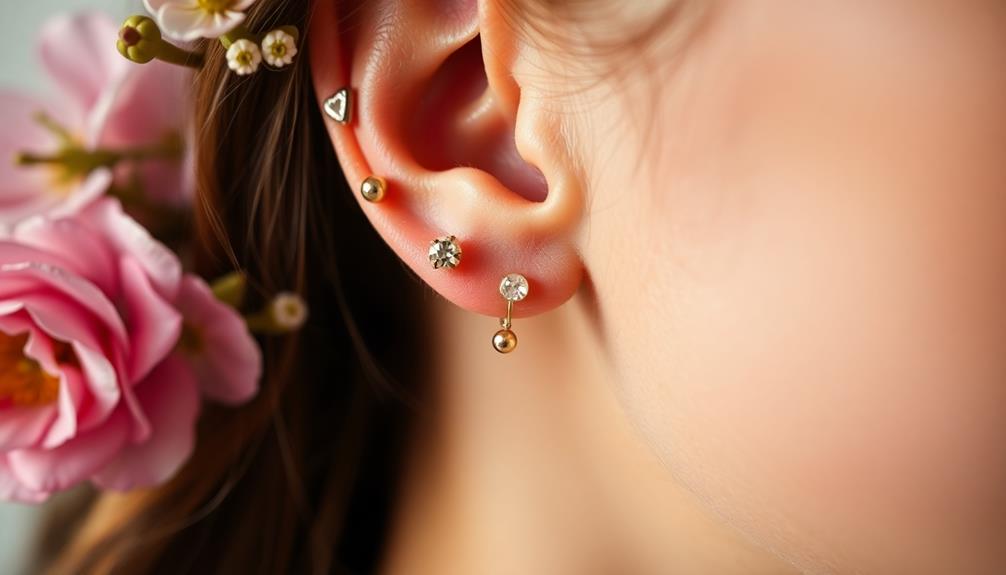
If you have PCOS, you might notice that hormonal imbalances can affect how your piercings heal.
It's essential to take into account tailored approaches, as your body may respond differently compared to others.
Paying attention to these factors can help guarantee a smoother healing process and ideal results.
Hormonal Imbalances and Healing
Understanding the effects of hormonal imbalances, particularly in conditions like PCOS, is vital when considering new piercings. If you're dealing with PCOS, you may notice that your body's immune response can be affected, leading to increased inflammation and prolonged healing times for your piercings. This means you could experience persistent swelling and irritation during the healing process.
To make the healing process smoother, it's advisable to choose larger gauge jewelry, like 16g for earlobes. This can provide better stability and reduce the risk of migration while your piercing heals.
It's also important to find a knowledgeable piercer who understands PCOS. They can guide you through tailored aftercare strategies to help address potential challenges.
Regular follow-ups with your piercer are important, too. Monitoring your healing progress can help catch any complications that arise due to hormonal fluctuations.
Tailored Piercing Approaches Needed
When considering a new piercing, it's important to recognize that individuals with PCOS often require tailored approaches due to their unique hormonal landscape.
Healing times may be prolonged because hormonal imbalances can lead to increased inflammation and skin sensitivity. Additionally, it's significant to understand the importance of credit scores in financial planning, as managing finances effectively can reduce stress and improve overall health.
It's important to remember that choosing larger gauge piercings, like 16g for earlobes, can provide better stability, minimizing the likelihood of irritation during the healing process.
Consulting with a knowledgeable piercer who understands the implications of PCOS is essential. They can help you find safe and effective piercing practices tailored to your needs.
Additionally, scheduling your piercings during stable hormonal periods can optimize healing, reducing the risk of complications linked to hormonal fluctuations.
Regular follow-ups and meticulous aftercare are crucial. Monitoring your healing progress allows you to address any issues that may arise promptly.
If you notice any signs of irritation, contact your piercer for guidance. By taking these steps, you can guarantee a more comfortable and successful piercing experience while managing the challenges posed by PCOS.
Hormone Replacement Therapy Effects
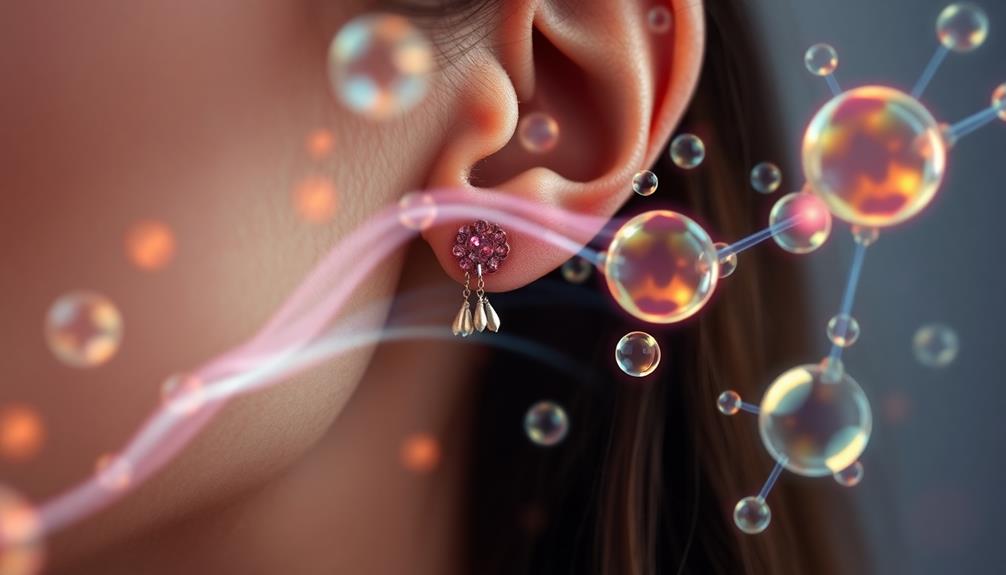
Hormone Replacement Therapy (HRT) can considerably impact your body, especially if you have nipple piercings. During the initial stages of estrogen treatment, you might experience increased breast tenderness and swelling, which can make your piercings become irritated. As your body adjusts, you may need to contemplate changes in jewelry size or type for comfort, particularly since maximum breast growth usually happens between 24 to 36 months after starting HRT.
Here's a quick overview of how HRT affects your body piercings:
| Effect | Description | Recommendation |
|---|---|---|
| Increased Tenderness | Estrogen can lead to heightened sensitivity in breast tissue. | Contemplate softer or adjustable jewelry. |
| Altered Healing Response | Hormonal changes can complicate healing processes for new piercings. | Wait until full breast development before piercing. |
| Injectable Estrogen Impact | Injectable forms may cause more tenderness than oral or transdermal methods. | Monitor your comfort closely during this phase. |
Being aware of these effects can help you manage your body piercing experience during hormone replacement therapy effectively.
Aftercare for Sensitive Piercings
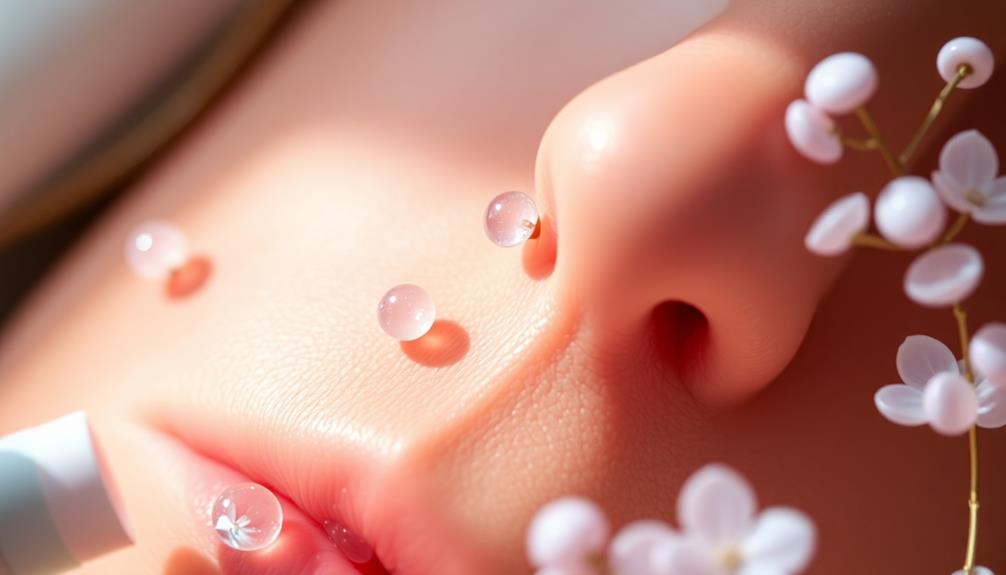
Caring for your sensitive piercings requires extra attention, especially during times of hormonal fluctuations. These changes can heighten sensitivity and swelling, making effective aftercare vital to prevent irritation and infections.
Here are some key tips to follow:
- Use a saline solution for regular cleaning, as it's gentle on sensitive skin.
- Avoid harsh chemicals that can exacerbate irritation.
- Apply cool compresses to reduce discomfort and swelling.
- Always wear nitrile or latex-free gloves when touching your piercings.
It's important to monitor any changes in sensitivity during these hormonal shifts. If you notice increased irritation, adjust your aftercare routine accordingly.
Keeping a record of these changes can help you identify patterns and inform better care practices. Remember, infections can occur if you don't maintain hygiene and care.
Being proactive with your aftercare will help you enjoy your piercings without unnecessary pain or complications. By following these guidelines, you'll guarantee your sensitive piercings remain healthy and comfortable, even during hormonal ups and downs.
Complications From Hormonal Changes
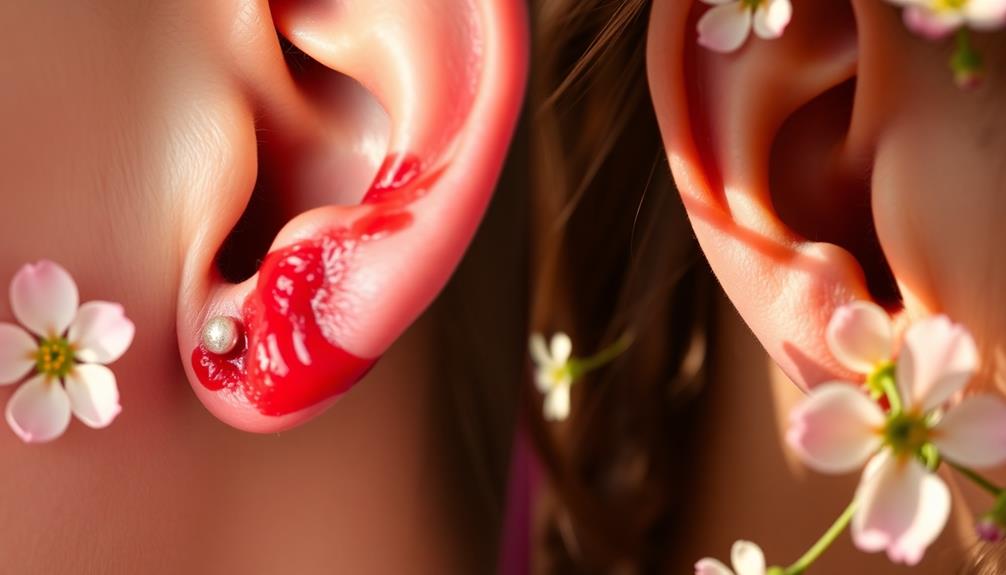
Hormonal changes can create a range of complications for those with piercings, especially during times of heightened sensitivity. Hormonal fluctuations, like those you experience during menstruation or conditions such as PCOS, might lead to increased swelling and irritation around your piercings. This can result in prolonged healing times, making it essential to monitor your body's signals closely.
As your hormones shift, elevated sebaceous gland activity can cause excess oil production, irritating your healing piercings and raising the risk of infection. If you have hormonal imbalances, you could face a greater likelihood of keloids or scarring, complicating your healing process even further.
Additionally, sleep disturbances from menstrual cramps might cause you to toss and turn at night, exacerbating irritation in your piercings. You may also notice changes in skin sensitivity around your piercings due to fluctuating hormone levels, leading to discomfort.
This increased sensitivity means you'll need to be extra diligent with your aftercare routine, ensuring your piercings heal properly and minimizing complications. Being aware of these challenges can help you take proactive steps to maintain your piercings during hormonal changes.
Frequently Asked Questions
Can Hormones Affect Piercings?
Yes, hormones can affect your piercings. They may cause increased sensitivity, swelling, or irritation, leading to discomfort. If you notice changes, consider adjusting your aftercare routine to accommodate your body's hormonal fluctuations.
Why Are All My Piercings Suddenly Irritated?
Like a sudden storm, your piercings can become irritated due to various factors. You might have increased sensitivity, excess oil, or even discomfort from sleep disturbances. Regular cleaning and monitoring can help soothe them.
Why Is My Piercing Randomly Hurting?
Your piercing might hurt randomly due to irritation, infection, or improper jewelry. You could also be experiencing sensitivity from recent activities or changes in your environment. Check for signs of inflammation or consult a professional.
Can Pregnancy Make Your Body Reject Piercings?
Pregnancy's like a stormy sea, tossing your body's balance. It's unlikely your piercings will be rejected, but hormonal shifts can stir irritation. Keep an eye on them and practice good aftercare to sail smoothly.
Conclusion
To sum up, understanding how hormonal changes can affect your piercings helps you navigate the healing process more smoothly. You might think it's just about aesthetics, but your body's chemistry plays a significant role too. By being mindful of your unique hormonal fluctuations, you can take better care of your piercings and avoid complications. So, embrace your body's changes and adjust your aftercare routine accordingly—your piercings will thank you for it!
Hi, my name is Danielle, and I’m an author for piercings-body.com. I have a passion for writing and love to share my knowledge on all things body piercing-related. I’m also a huge advocate for safe body modification practices and believe everyone should be able to make informed decisions about their bodies. When I’m not writing or blogging, I enjoy spending time with my family and friends, practicing yoga, and exploring new places.

